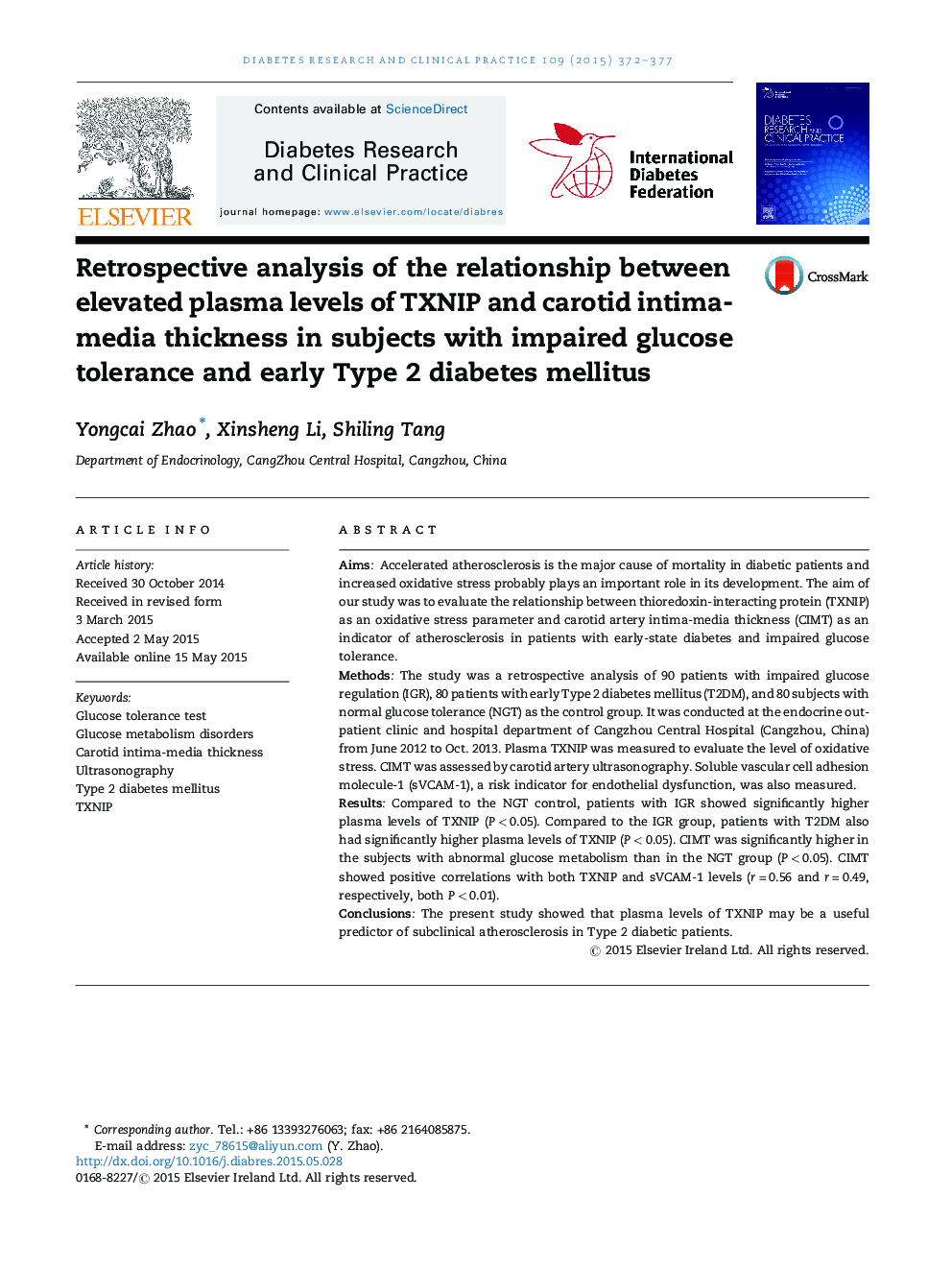| Article ID | Journal | Published Year | Pages | File Type |
|---|---|---|---|---|
| 5899261 | Diabetes Research and Clinical Practice | 2015 | 6 Pages |
â¢IGR patients have elevated CIMT.â¢Oxidative stress and inflammation are now being paid more attention.â¢Patients with IGR and T2DM showed significantly increased serum levels of sVCAM-1.
AimsAccelerated atherosclerosis is the major cause of mortality in diabetic patients and increased oxidative stress probably plays an important role in its development. The aim of our study was to evaluate the relationship between thioredoxin-interacting protein (TXNIP) as an oxidative stress parameter and carotid artery intima-media thickness (CIMT) as an indicator of atherosclerosis in patients with early-state diabetes and impaired glucose tolerance.MethodsThe study was a retrospective analysis of 90 patients with impaired glucose regulation (IGR), 80 patients with early Type 2 diabetes mellitus (T2DM), and 80 subjects with normal glucose tolerance (NGT) as the control group. It was conducted at the endocrine out-patient clinic and hospital department of Cangzhou Central Hospital (Cangzhou, China) from June 2012 to Oct. 2013. Plasma TXNIP was measured to evaluate the level of oxidative stress. CIMT was assessed by carotid artery ultrasonography. Soluble vascular cell adhesion molecule-1 (sVCAM-1), a risk indicator for endothelial dysfunction, was also measured.ResultsCompared to the NGT control, patients with IGR showed significantly higher plasma levels of TXNIP (P < 0.05). Compared to the IGR group, patients with T2DM also had significantly higher plasma levels of TXNIP (P < 0.05). CIMT was significantly higher in the subjects with abnormal glucose metabolism than in the NGT group (P < 0.05). CIMT showed positive correlations with both TXNIP and sVCAM-1 levels (r = 0.56 and r = 0.49, respectively, both P < 0.01).ConclusionsThe present study showed that plasma levels of TXNIP may be a useful predictor of subclinical atherosclerosis in Type 2 diabetic patients.
